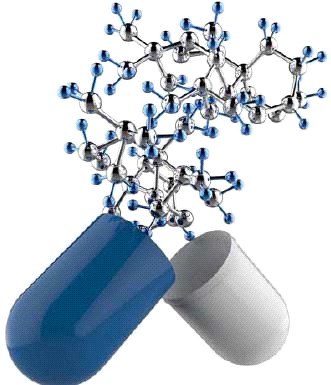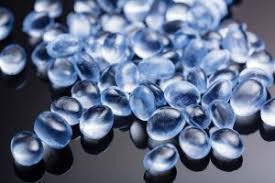|
Medical Polymers :
Emerging Trends & Opportunities
Different SMPs such as shape memory
polyurethane (SMPU), polyester, polyhydroxyproline,
polysilamine, etc., and some responsive hydrogels
including poly (N-isopropylacrylamide) (PNIPAAm) hydrogels,
polythiophene gel, etc., are used to fabricate such smart
textile.
Indeed, a detailed assessment of the
factors that influence the biocompatibility and toxicity
of SMPs is crucial for the safe and sustainable
development of those that are emerging.

Antimicrobial Plastics
Antimicrobial plastics are polymers that
impede the growth of microorganisms owing to the presence
of active antimicrobial agents on the polymer.
Antimicrobial plastics inhibit the growth of
microorganisms in a variety of products that they enclose
or contain, thus playing a big role in extending the
quality and shelf life of the products. Moreover,
antimicrobial plastics help in curtailing infections and
preventing illnesses by resisting the growth of
disease-causing pathogens.
Owing to their multifarious applications,
antimicrobial plastics have witnessed a significant rise
in demand in the past few years, especially in industries
such as healthcare, packaging, and
personal care. The trend is likely to remain strong in the
near future as well, with their rising set of applications
in the fields of biomedical devices and implants expected
lead to a massive rise in growth opportunities for
antimicrobial plastics.
Typical end use applications are :
• Vascular Access Devices : Catheters,
Injection Systems, Needle less Connectors, etc.
• Fluid Management Devices : IV Systems & Bags, Valves,
Tubing, etc.
• Device/Instrument Housings
• Airway Management Devices : Endotracheal & Tracheotomy
Tubes, etc.
• Laparoscopic Instruments
• Wound Dressings
• Class I, II and III Medical Devices that come in contact
with patients or their caregivers And many other
applications Some of the possible antimicrobial compounds
(silver-and non-silver based) include :
• Butyl Rubber (IIR)
• Ethylene Propylene Diene Monomer (EPDM)
• Polyisoprene (IR)
• Polyurethane (TPU)
• Silicones (LSR and HCR)
Transparency Market Research estimates
that the U.S. antimicrobial plastics market will exhibit a
9.3% CAGR from 2014 to 2020, rising from a valuation of
US$662.3 mn in 2013 to a revenue opportunity of nearly
US$1,227 mn by 2020.
Emerging Trends In Manufacturing
Technologies
While the above discussion is focused on
trends and applications for Medical Polymers, the emerging
trends in manufacturing of polymer based medical devices
are also equally important to look into. It can include
not only new trends in the commonly used plastics
conversion technologies but also manufacturing environment
/ hygienic manufacturing as well as procedures like
surface treatment / modification, 3D Printing bonding,
antibacterial processing / coatings, anticounterfeiting,
new sterilization approaches, packaging, printing and many
more.
will take another opportunity in future to
elaborate more on emerging trends and opportunities in
manufacturing technologies in future.
About Important Thermoplastics Used in
the Healthcare Industry
While polymers have been used in the healthcare industry
for decades, more recently industry leaders are embracing
the benefit so fusing specialty compounds and
thermoplastics in medical, biomedical, and pharmaceutical
applications. Beyond single-use plastics, higher
performance polymers, medicalgrade plastics, and
thermoplastics present long-term value to patients and to
healthcare as a whole.
Following are the six most readily used materials.
Ultra-High Molecular Weight Polyethylene (UHMW-PE)
is a medical-grade plastic with high-impact strength, good
wear and abrasion resistance, excellent chemical
resistance, and outstanding low temperature properties.
Polyether Ether Ketone (PEEK) is a unique
engineering thermoplastic that also offers excellent
chemical compatibility, low susceptibility to stress
cracking, clinically proven biocompatibility, high
dimensional stability, and good electrical insulation.

Acrylic, the common name for
polymethyl methacrylate (PMMA), is a medical-grade
thermoplastic used in the manufacture of medical devices
and medical implants such as intraocular lens implants,
bone cement, and cranial implants.
Acetal Copolymer (Polyoxymethylene) is a
medical-grade thermoplastic with high mechanical strength,
rigidity, and dimensional stability. It delivers good
sliding characteristics and excellent wear resistance, as
well as low moisture absorption.
Polypropylene (PP) is a thermoplastic
manufactured by the catalytic polymerization of propene.
PPs are universal standard medical-grade plastics with
well-balanced properties providing excellent chemical
resistance, high purity, low water absorption, and good
electrical insulating properties.
Polyphenylene Sulfide (PPS) is a
hightemperature thermoplastic polymer that is very
chemically resistant with amazing mechanical strength,
even at temperatures above 200°C (392°F), with low
susceptibility to creep.
(
https://www.cdiproducts.com/blog/thetop-6-thermoplastics-trusted-in-thehealthcare-industry
). |
